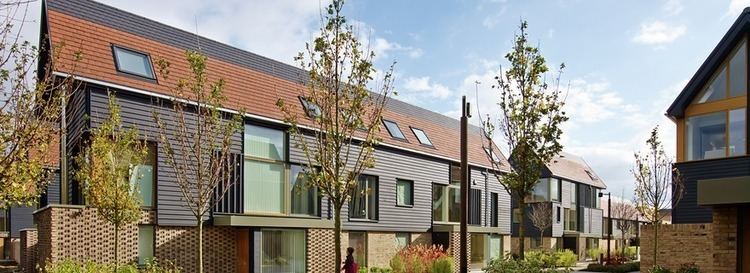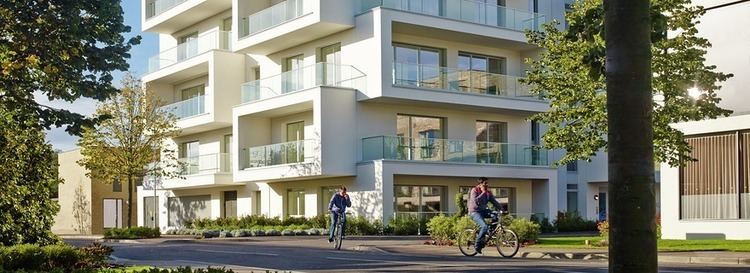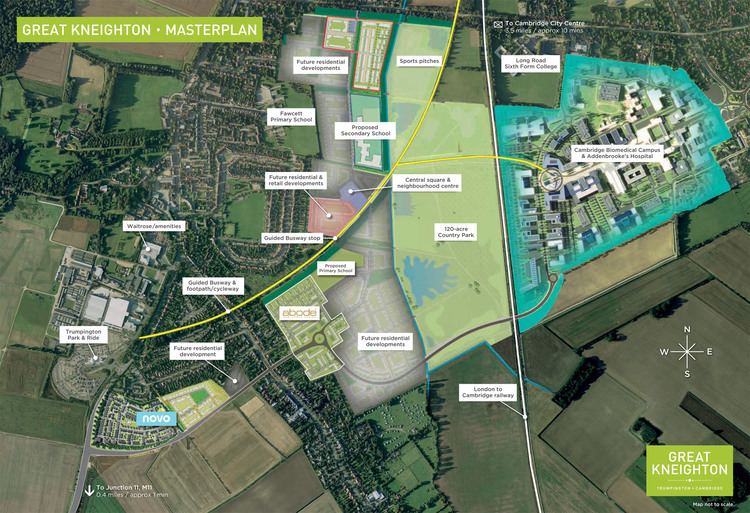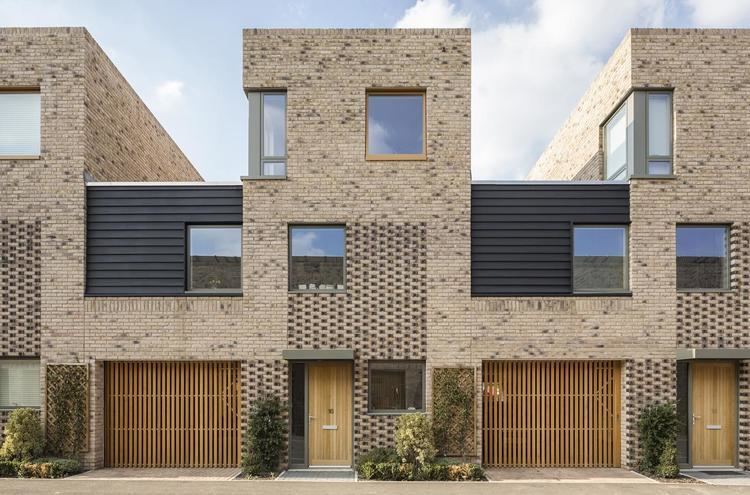 | ||
161109 clay farm great kneighton 3fe primary school cambridge
Great Kneighton is the marketing name chosen by Countryside Properties for a major new housing development to the south of Cambridge on the Clay Farm and Glebe Farm sites in the Trumpington ward of the city. Together with the Trumpington Meadows development, south-west of Trumpington, it forms part of the "southern fringe" expansion of the city. The choice of the name "Great Kneighton" provoked some controversy. Historically, the name "Great Kneighton" had been used for a part of Trumpington parish somewhat further to the east, now within the grounds of Addenbrooke's Hospital, and, in addition, the proposed name was interpreted as aiming to give the new development a separate identity, whereas local aspirations were rather that the incoming community would be drawn into an enlarged Trumpington.
Contents
- 161109 clay farm great kneighton 3fe primary school cambridge
- Great kneighton a contemporary new quarter for cambridge by countryside
- Development Plans
- Archaeology
- References

Great kneighton a contemporary new quarter for cambridge by countryside
Development Plans

280 new homes are being built on the Glebe Farm site, south of Shelford Road.These are mainly apartments. Forty per cent of the homes will be‘affordable homes’, a mixture of rental and intermediate housing, provided by Cambridgeshire Partnerships Limited. The first residents arrived in late 2012. North of Shelford Road, on the Clay Farm site, 2300 homes are to be built, along with a new secondary school, Trumpington Community College (to open in 2015/16), allotments, and a 120-acre country park. A new neighbourhood centre for Trumpington as a whole will host library provision, community facilities, medical facilities, retail space, youth facilities, as well as office space for the police and social services. Again forty per cent of the homes will be ‘affordable homes’.
As well as providing the allotments, an adventure playground and sports facilities for the planned secondary school, the new park will provide the local community with extensive woodlands, a bird reserve, areas of wetland with balancing ponds and sustainable urban drainage systems, used for harvesting rainwater. All will contribute to the site's biodiversity. Planting has started on the southern half of the Country Park and will include over 13,000 new trees and bushes.

The development's environmentally-friendly credentials extend to encouraging greener modes of transport too, as well as protecting and enhancing the existing natural habitat. It offers easily accessible cycle stores, cycleways and footpaths. There are good public transport links provided by the Guided Busway which provides services to Addenbrooke's and, with a detour via the hospital, to the railway station, city centre and St. Ives.
Archaeology

Prior to the commencement of construction, Oxford Archaeology East undertook archaeological excavations. The 20 hectare site represented the largest single archaeological excavation ever to have been undertaken in the Cambridge area. The team found evidence of activity from the Early Neolithic (c. 4000BC) up to the present, with the bulk of the archaeology dating from the Middle Bronze Age to and Late Iron Age-Early Roman periods.), Initially laid out around 1500 BC, the system of middle Bronze Age rectilinear fields and enclosures covered more than half the excavation area, though there was a noticeable absence at the centre of the site. The enclosures may have been for cattle which would have been a valuable resource that needed to be retained and protected from wild animals and rustlers. The enclosures were about 60–90 m x 50 m, bounded by large deep ditches.

The large and highly significant finds assemblage included large quantities of shell-tempered Deverel-Rimbury pottery, flint-tempered finewares, animal bone, bone needles, a bronze spearhead, flint arrowheads, land large numbers of heated sandstones. The form of the late Iron Age occupation was very different – small fields and paddocks bounded by shallower and narrower ditches. No posthole structures were recorded, but the quantity of artefacts indicated direct occupation in parts. In the Late Iron Age, there was a high-status burial near the western edge of the development, close to the present Cambridge Professional Development Centre site. This has been dated to c. 35-40AD and included two bodies which had been cremated. They were accompanied by grave goods from overseas, including pottery vessels and a fine toiletry set.
The settlement continued into the early Roman period before the area was abandoned, probably before the end of the 2nd century. However, one of the most puzzling features on the site, a double ditched sub-circular ‘monument’, partially lying beyond the southwest edge of excavation, dated from a later period. The remains of at least three individuals, five late Roman bracelets and a group of large iron nails, with butchered cattle remains interspersed, were recovered from high up in the inner ditch, suggesting a funerary function for the feature. Some abraded late Roman pottery was also recovered. The human remains appear to have been redeposited, perhaps from a nearby cemetery, in the very late or even post-Roman period.
